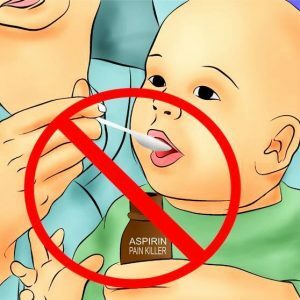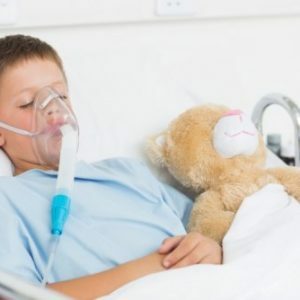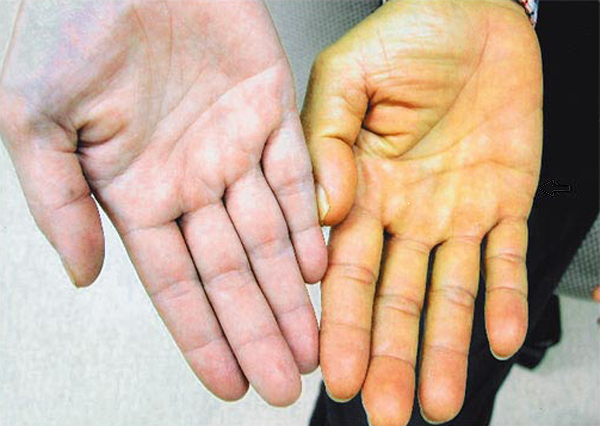Reye's syndrome( Rey) - what is it, symptoms, treatment

Reye syndrome( Reya) is a pathology that manifests itself in fatty liver degeneration and encephalopathy.This disease belongs to the category of rare and dangerous, first described in 1963. According to statistics, Reye syndrome is most often diagnosed in childhood and adolescence, and in adults it is much less common.
The clinical criteria of the disease under consideration are encephalopathy of non-inflammatory origin and fatty liver disease - these two criteria can develop independently, but can be present simultaneously.As a rule, the "classic" Reye syndrome doctors are always associated with a frequent intake of Aspirin, but atypical - with a violation of metabolic processes of an innate nature.Specifically, the atypical type of Reye syndrome is diagnosed exclusively in childhood( up to 5 years).
Until 1973, the lethal outcome of the disease in question was practically unavoidable, but to date this figure has fallen by half .The problem is late diagnosis, because the outcome of the disease depends on how early the therapeutic procedures are started.
Table of Contents: Causes of Reye's Syndrome Symptoms of Ray's Syndrome How to Diagnose Reye's Syndrome Treatment of Reye's Syndrome Forecasts for Reye's SyndromeReasons for the development of Reye's Syndrome
 Despite the possibilities of modern medicine, the true causes of the disease are still unknown. It is assumed that the basis of these pathological processes is the damage to mitochondria and the violation of their functions - these pathological changes occur at the cellular level.
Despite the possibilities of modern medicine, the true causes of the disease are still unknown. It is assumed that the basis of these pathological processes is the damage to mitochondria and the violation of their functions - these pathological changes occur at the cellular level.
Physicians and scientists of different directions in medicine concluded that all the patients with Reye's syndrome had a previous infectious pathology - flu, scarlet fever, chicken pox and others.The risk of developing the disease under consideration is increased almost 40-fold if Aspirin was used as part of therapy for infectious pathologies.Such parallels between the development of Reye's syndrome and the intake of Aspirin are associated with the toxic effect of this drug, which it exerts on the brain and liver.
Symptoms of Ray's syndrome
Most often, the symptoms of the disease in question appear after a person is cured of a viral infection, but in some cases, clinical manifestations of Reye's syndrome have a place on the 5th day of an infectious disease.
The first manifestations of the syndrome in question are:
- nausea;
- diarrhea( diarrhea);
- vomiting.
These symptoms are similar to signs of diseases of the gastrointestinal tract, so patients either seek help from the gastroenterologist, or generally begin to treat themselves.Already on the 5th-7th day of the disease the liver becomes maximally enlarged, although signs of jaundice are completely absent. After a few more days, neurologic symptoms begin to manifest themselves actively, which will indicate the brain damage:
- increased, unmotivated irritability;
- disorientation in space;
- drowsiness;
- confusion;
- increased respiration rate.
Important! Clinical manifestations in Reye's syndrome are quite variable and depend on the age at which the patient is.For example, in infancy, convulsions, respiratory distress and diarrhea are most often determined.But the children of older age suffer from indomitable vomiting, convulsions and disturbances of consciousness.
If the Reye syndrome progresses and no treatment is received by the patient, then rapid development of cerebral edema, paralysis and convulsions is possible, then the patient enters into a coma.
Note: all clinical manifestations of Reye's syndrome have a place to be for 1-2 weeks, and then they disappear.Unfortunately, inadequate qualified medical care leads to a fatal outcome - in 50% of all reported cases the outcome was sad.
The disease under consideration has a regular development, therefore doctors distinguish several stages of its course :
- 0 stage - the doctor can reveal signs of fatty liver hepatosis, but there are no clinical manifestations of this pathology;
- Stage 1 - the patient is vomiting, there is a violation of the liver, there is increased drowsiness( at this stage, the mortality rate of patients is 5%);
- Stage 2 - Reye syndrome is actively manifested by respiratory distress, convulsions, aggressive behavior, rapid heartbeat, fever, delirium, disorientation in space;
- Stage 3 - the patient has coma, the doctors note the increased rate of breathing, the disruption of the liver and the change in pupillary reflexes( the mortality of patients at this stage of the disease is 50-60%);
- Stage 4 - almost all reflexes are absent, there is no reaction to irritants, there is a violation of breathing, there is a deepening of the coma( mortality rate is 95%).
How is the Reye syndrome diagnosed
It's difficult to diagnose, since the disease under consideration does not have the specific symptoms of .It is extremely important to remain cautious about this pathology, monitor and immediately react even to minor changes in the patient's state of health.
In the diagnostic activities of the Reye syndrome, laboratory blood tests( biochemical analysis) are mandatory.A characteristic feature of the disease under consideration will be an increase in the concentration of ammonium in the blood, but by the end of 3-4 weeks of the disease this index is decreasing.In addition, patients will necessarily have an increase in serum transaminases, but the activity of alkaline phosphatase and bilirubin will remain unchanged, within the norm. In childhood, Reye's syndrome will manifest itself in the blood:
- by lowering blood glucose - hypoglycemia;
- drop in the level of prothrombin - hypoprothrobinemia;
- albumin insufficiency - hypoalbuminemia;
- by reducing the factors of the blood coagulation system.
As part of the diagnosis of Reye's syndrome, liver tissue biopsy is often performed, since such a study can detect fatty cell degeneration, but inflammation and liver necrosis in the present disease will be absent.
To determine neurologic changes, the patient is given a computerized tomography of the brain and an electroencephalogram.To exclude the infectious damage of the nervous system, laboratory studies of the cerebrospinal fluid are often carried out.
Treatment of Reye syndrome
 As such, there is no treatment for Reye's syndrome - all treatment measures are aimed only at maintaining the vital functions of .Treatment in case of appearance of clinical manifestations of the considered disease should be carried out only in a hospital.
As such, there is no treatment for Reye's syndrome - all treatment measures are aimed only at maintaining the vital functions of .Treatment in case of appearance of clinical manifestations of the considered disease should be carried out only in a hospital.
If a patient with Reye syndrome is already in a coma, the doctors will carry out treatment aimed at preventing death and serious complications.For example, often enough against the background of coma in Reye's syndrome, intracranial pressure in the patient increases, and in fact its value should not exceed 15 torr.In the case of increased intracranial pressure, the patient will be given intravenous injections of Furosemide, Mannitol and other medications.To prevent the development of inflammatory processes directly in the brain tissue, the patient is prescribed corticosteroids.
Without fail, patients with Reye syndrome:
- prescribe the administration of a concentrated solution of glucose - its deficiency needs to be fully replenished;
- corrects bleeding disorders - inject vitamin K and freshly frozen plasma;
- use blood transfusion or dialysis - not always, only at the doctor's discretion.
Simultaneously with the above described measures, the patient is constantly measured pressure, pulse, respiratory rate and other vital parameters.If necessary, corrective therapy is carried out in these directions.
By the way, if you find the first signs of the disease( vomiting, nausea, diarrhea), do not force the patient to eat - most likely, he will have no appetite.But to insist on the use of water or other liquid is highly desirable, because indomitable vomiting, coupled with diarrhea, can lead to dehydration.
Forecasts for Reye's Syndrome
Only rapid diagnosis and timely therapy are the basis for a successful outcome of the disease. Recently, the death rate of patients with a diagnosis of Reye syndrome has decreased significantly, but infants and patients in the 4 stages of the pathology in question are an exception.
If we talk about the prognosis of the disease, it depends only on the degree of changes in the functions of the central nervous system and the rate of progression of disorders.If the patient has overcome the acute phase of the pathology, then in most cases, his full recovery comes.In some cases, there may be signs of damage to the brain cells - for example, the child begins to delay mental development, recurrent convulsions, peripheral nerve pathology.
The unfavorable prognosis for Reye syndrome has its own distinctive features: the patient undergoes a rapid change in the first three stages, seizures appear at an early stage, intracranial pressure rises sharply.
Note: Reye syndrome practically never develops in one person twice.This fact doctors can not explain.Of course, it is worth knowing the rules for the prevention of Reye's syndrome - it is easier to prevent such a disease than to treat it later.First, you need to closely monitor the health of the child or adult who are at the stage of developing a viral infection.At the first manifestations of problems in the work of the organs of the gastrointestinal tract, one should immediately apply for qualified medical care, and not engage in self-medication.Secondly, , it is necessary to exclude preparations of acetylsalicylic acid( Aspirin, in particular) from the therapy of viral infections.
Reye syndrome is a dangerous and "insidious" disease.Yes, it is rare, but it can develop in every child and adult against the background of ongoing viral infections.Modern medicine is able to help patients with this pathology, but this requires timely diagnosis.And given the likelihood of developing complications against the background of brain lesions, it will be much easier to take the necessary preventive measures and avoid the development of Reye's syndrome.
Tsygankova Yana Aleksandrovna, medical reviewer, therapeutist of the highest qualification category



